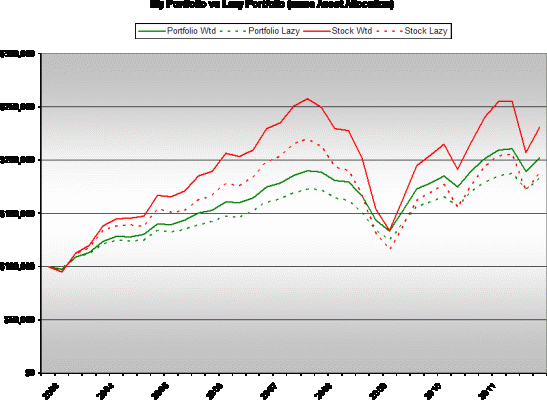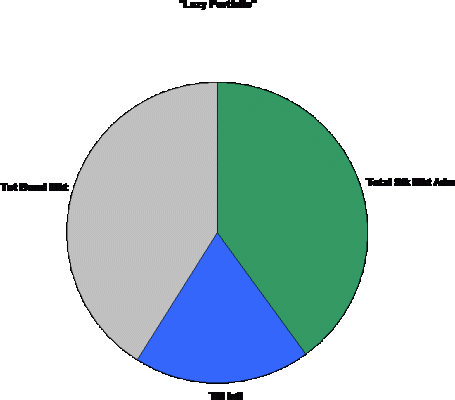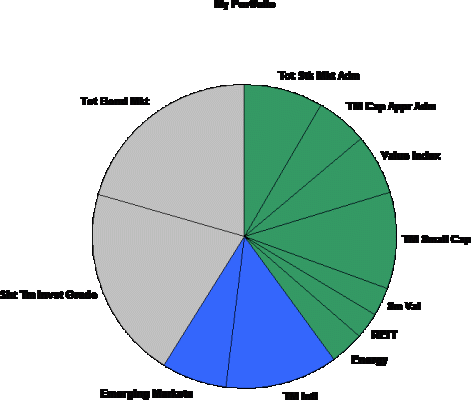Midpack
Give me a museum and I'll fill it. (Picasso) Give me a forum ...
This question has come up directly and indirectly a few times lately, so I wondered how my (Four Pillars) slice & dice portfolio was doing versus a "lazy portfolio." For comparison I took my actual holdings and allocations and compared them to a lazy portfolio using the same overall allocations (see pie charts). My methodology is basically the same as a lazy portfolio (low expense index funds - disciplined rebalancing to AA target), I just have some "tilts" and other choices of my own in place of the broader fund "lazy" categories.
I was pleased with my results. But the volatility of my portfolio (measured as std dev) is a little higher than a lazy portfolio, confirming my avatar. Many of you will see where I've opted for higher returns and the volatility that comes with those choices - though I'm getting more return than risk (my equity SD is almost equal to the return whereas the lazy SD is higher than those returns).
Many of you will see where I've opted for higher returns and the volatility that comes with those choices - though I'm getting more return than risk (my equity SD is almost equal to the return whereas the lazy SD is higher than those returns).
However, my point was also to demonstrate (as many others much smarter than I am have already) that a lazy portfolio will perform almost as well as a portfolio with only three broad funds - and the lazy portfolio may outperform in the long run. IOW, decent returns don't have to be rocket science AT ALL!
I hesitated to show the pie charts at all for that reason, and the percentages were deliberately left off. My purpose is NOT to make fund or any other recommendations.
FWIW...For 2003 thru 2011
I was pleased with my results. But the volatility of my portfolio (measured as std dev) is a little higher than a lazy portfolio, confirming my avatar.
However, my point was also to demonstrate (as many others much smarter than I am have already) that a lazy portfolio will perform almost as well as a portfolio with only three broad funds - and the lazy portfolio may outperform in the long run. IOW, decent returns don't have to be rocket science AT ALL!
I hesitated to show the pie charts at all for that reason, and the percentages were deliberately left off. My purpose is NOT to make fund or any other recommendations.
FWIW...For 2003 thru 2011
| My Portfolio 59:41 | Equiv Lazy Portfolio | My Equity Holdings Only | Lazy Equity Holdings Only | |
| Annual Returns | 8.2% | 6.9% | 9.8% | 7.3% |
| Std Dev (qtrly rtns) | 6.1% | 5.5% | 10.2% | 9.5% |
Attachments
Last edited:



